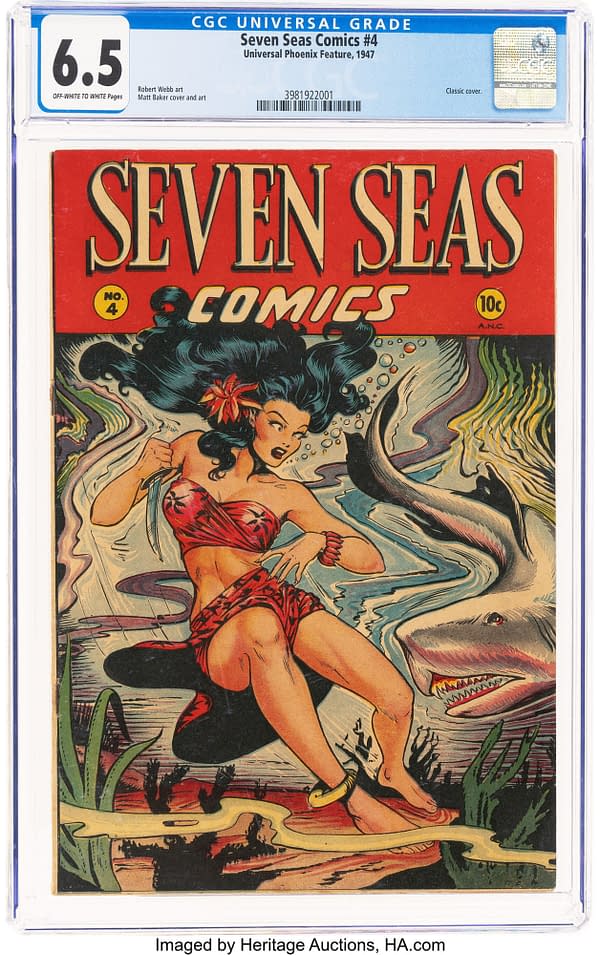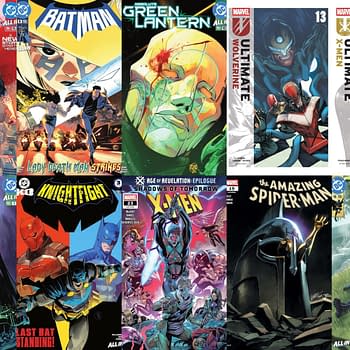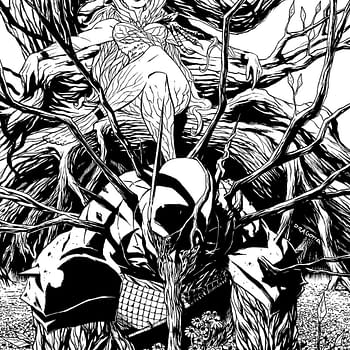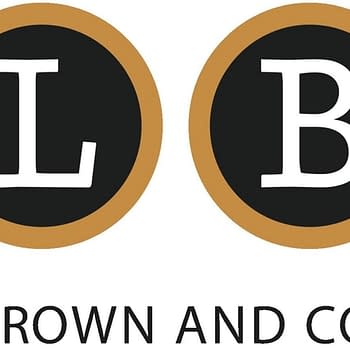Posted in: Comics, Heritage Sponsored, Vintage Paper | Tagged: golden age, Matt Baker
The Volcanic Rise of Matt Baker's Seven Seas Comics #4, Up for Auction
In Seven Seas Comics #4, Matt Baker's South Sea Girl stars in a movie which seems to point to the character's film inspirations.
Article Summary
- Seven Seas Comics drew inspiration from 1930s-40s South Sea Island films and star Dorothy Lamour.
- Matt Baker’s South Sea Girl showcases iconic good girl art, becoming a Golden Age collector’s grail.
- Writer Manning Lee Stokes crafted adventurous, whimsical tales and later became a prolific novelist.
- Seven Seas Comics #4’s volcanic rise in popularity has placed in among the most sought-after Baker comics.
Although the title seems unusual to us today, Seven Seas Comics was inspired by the South Sea Island films of the 1930s-1940s. Movies featuring a beautiful sarong-wearing South Sea Island girl were practically their own genre in the decade leading up to the debut of Matt Baker's South Sea Girl in Seven Seas Comics. And if one can point to a root inspiration for Baker's South Sea Girl, it would certainly be actress Dorothy Lamour. The actress starred in so many popular South Sea Island films that she became known as "The Sarong Girl." Such films included John Ford's The Hurricane (1937), Her Jungle Love (1938), Typhoon (1940), Aloma of the South Seas (1941), and Rainbow Island (1944).
Seven Seas Comics #4 seems to lean into South Sea Girl's movie origins, as the story centers around a movie producer set on filming a movie on South Sea Girl's home, the volcanic Vanishing Isles. "Vanishing islands" typically refers to the real-world phenomenon of permanent islands that disappear under the ocean at high tide, but South Sea Girl's Vanishing Isles were shrouded in mist and difficult to find, perhaps not unlike Skull Island of King Kong fame. Seven Seas Comics #4 has likewise been volcanic and difficult to find, and is now considered one of the top-three most valuable Matt Baker comics based on its now-iconic cover. It's easy to see why, as the beautiful, dark-haired South Sea Girl fights for her life against the threat of a shark. This scene of raw, underwater conflict has made the comic a grail among Golden Age collectors. A copy graded CGC 9.2 sold for an $81,000 in February 2023, while another at CGC 7.5 hammered at $31,200 in September 2024. This CGC FN+ 6.5 Off-white to white pages copy is up for auction in the 2025 September 18 Golden Age Comics Century Showcase Auction II at Heritage Auctions.

In the story of Seven Seas Comics #4, the movie producer, perhaps inspired by the pipe-smoking John Ford himself (though he looks more like Iger in the story), is forced to contend with a temperamental star until the real South Sea Girl steps in to play the role in the most authentic way possible. Written by Manning Lee Stokes, it's a typical Baker story that balances whimsy and danger with plenty of opportunities to let Baker's good girl art style shine.
Stokes wrote the South Sea Girl stories and several others in the Seven Seas Comics series. Interestingly, besides his work in Seven Seas Comics, his only known comics work is writing The Case of the Winking Buddha, with artwork by Charles Raab and published by St. John in 1950. Like its far more famous companion, It Rhymes with Lust by Matt Baker and authors Leslie Waller and Arnold Drake and published in the same year, The Case of the Winking Buddha was a digest-size graphic novel. And like It Rhymes with Lust author Leslie Waller, Manning Lee Stokes would go on to become a prolific novel writer. While producing an incredible range of work from the late 1940s through the 1970s. Stokes wrote several installments of the 1960s paperback reboot series of the seminal dime novel and pulp character Nick Carter.
Seven Seas Comics might be considered a turning point or level-up in Matt Baker's career. The series began about a year and a half after his comics debut on Sheena in Jumbo Comics, and his style had evolved significantly towards the form that would make him a legend in subsequent decades. Baker's work on the character South Sea Girl in all six issues of this series, and on the covers of its final four issues, was the beginning of a higher profile for Baker's Good Girl artistic skill. His infamous work for Fox Feature Syndicate ramped up just as Seven Seas Comics was concluding.
While Seven Seas Comics was produced (and initially published) by Samuel "Jerry" Iger's own Universal Phoenix Features, issue #4 lists the publisher as Leader Enterprises in the indicia, with Iger and Ruth Roche listed as executive editor and managing editor, respectively. Leader Enterprises was primarily the publisher of trade-focused newspaper publications such as The Civil Service Leader and Fashion Trades, among others. Leader Enterprises publisher Jerry Finkelstein founded political news outlet The Hill in 1994. If this issue had been published during the WWII, one might logically conclude that this arrangement came about to gain access to Leader's paper quota, but such quotas were halted at the end of 1945. Still, paper shortages lingered for years after the war, and Seven Seas Comics would not be the only Matt Baker-related publication that had some unusual publishing arrangements for this reason.
However, the listed general manager in this issue, N.H. Mager might be the connective glue between Universal Phoenix Features and Leader Enterprises. Mager entered the newspaper syndication business working as managing editor of National Newspaper Service, a syndicated news service that launched in early 1937 under the leadership of Martin B. Iger. This is around the same time that Jerry Iger and (at that time) Will Eisner's Universal Phoenix was ramping up to provide comics to Editors Press Service's Wags publication. I could not find a definitive relationship between Martin B. Iger and Jerry Iger at the time of this writing due to the difficulty in tracking 19th-century genealogy data outside the U.S., but there would seem to be a lot of connectable dots here. As for N.H. Mager, he spent most of his career in the marketing and trade show field, which Leader Enterprises also dabbled in.
Seven Seas Comics series is an important early moment in Matt Baker's career, and issue #4 has been experiencing some volcanic gains in the eyes of collectors in recent years. One of the most sought-after Matt Baker comic books, there is a CGC FN+ 6.5 Off-white to white pages copy of Seven Seas Comics #4 up for auction in the 2025 September 18 Golden Age Comics Century Showcase Auction II at Heritage Auctions.


















